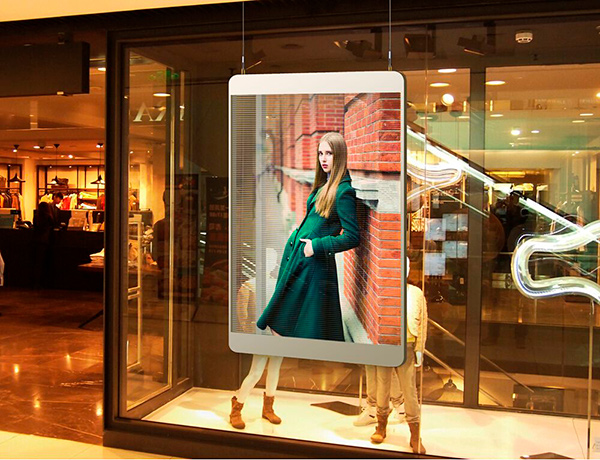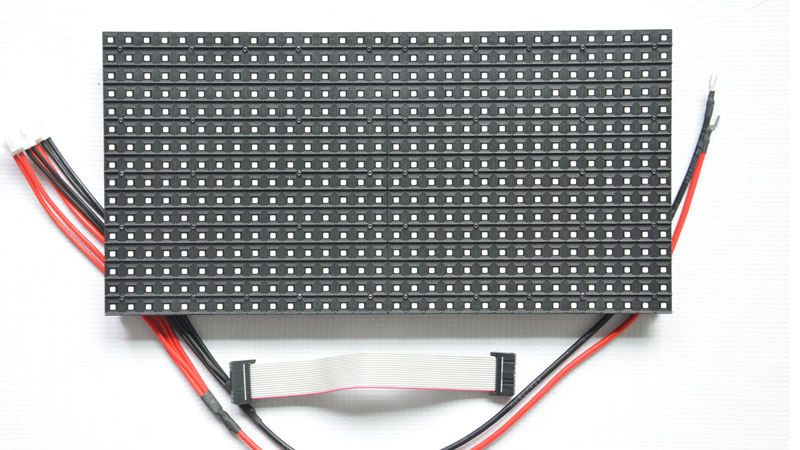Although both LED transparent screen and LED display screen belong to the LED series, there are significant differences in many aspects. The following is a detailed comparison of the two, hoping to provide some help to everyone.
一、Structure and appearance
LED transparent screen
It uses LED lamp beads to emit light and transparent materials. There are various types of it. The more common ones are LED grille screen, LED film screen, LED crystal film screen, LED hole screen and other hollow structural designs. Reduce the obstruction of the structural components to the line of sight and improve the perspective effect. Different styles have different transparency, and the transparency rate can reach 65%~95%.

LED display screen
1) Made of LED unit board, divided into SMD technology and COB technology, with clear picture quality and good integrated display effect
2) Not light-transparent, no transparency.
3) Bendable, LED soft module can be bent with a large arc, and can be made into arc, cylindrical, spherical, wavy and other clear shapes to meet more personalized display occasions.

二、Display effect
LED transparent screen
The high transparency makes the picture display effect very good, with a three-dimensional sense of space.
High contrast, realistic image effect, strong visual impact.
LED display screen
Not transparent, the picture display effect is relatively traditional.
There are restrictions on the shape, and due to the restrictions of the LED box structure, gaps will appear when the splicing is unnatural.
三、Installation and maintenance
LED transparent screen
Quick installation, can be directly attached to the glass for display.
Indoor maintenance is convenient and safe, saving manpower and material resources.
LED display screen
During installation, it needs to rely on the installation structure to fix, and the size calculation requires accuracy.
During maintenance, you only need to disassemble the entire module or box for repair, and directly replace the spare parts, which basically does not affect normal use.
四、Application scenarios
LED transparent screen
Due to its high transparency, light weight, quick installation and easy maintenance, it is mainly used in the inside of glass curtain walls, scenic spot publicity, cultural education, information release, city and party and government publicity and other fields.
It can also be used in space design, exhibitions and window displays
LED display screen
Due to its high brightness, wide viewing angle and long life, it is widely used in indoor and outdoor occasions, such as conference rooms, exhibition halls, shopping malls, big data platforms, indoor stages, outdoor advertising screens, commercial advertisements, cultural and entertainment activities (such as stage backgrounds, concerts and concerts, etc.), sports events (real-time display of game information, timing and scoring, and wonderful playback) and transportation (providing real-time traffic information, signs and advertising).
五、Energy saving and environmental protection
LED transparent screen
Due to its high transparency, no noise, low power consumption and other good performance, it does not require any auxiliary heat dissipation equipment, and can allow the flowing air to dissipate heat naturally.
LED display screen
Although it also has certain energy-saving and environmental protection characteristics, its energy consumption may be higher than that of LED transparent screen.
六、Limitations
LED transparent screen
The display picture is not as clear, delicate and colorful as traditional LED screen. This is because LED transparent screens sacrifice density to obtain higher transparency. The semi-transparent characteristics make the transparent screen easily affected by light, and the transparent effect will be weakened when the light is too bright.
LED display screen
Under strong outdoor light, higher brightness may be required to ensure the display effect, thereby increasing energy consumption.
In general, LED transparent screens and LED displays each have their own unique advantages and limitations. When choosing, comprehensive consideration should be given to factors such as specific application scenarios, budget and performance requirements.

